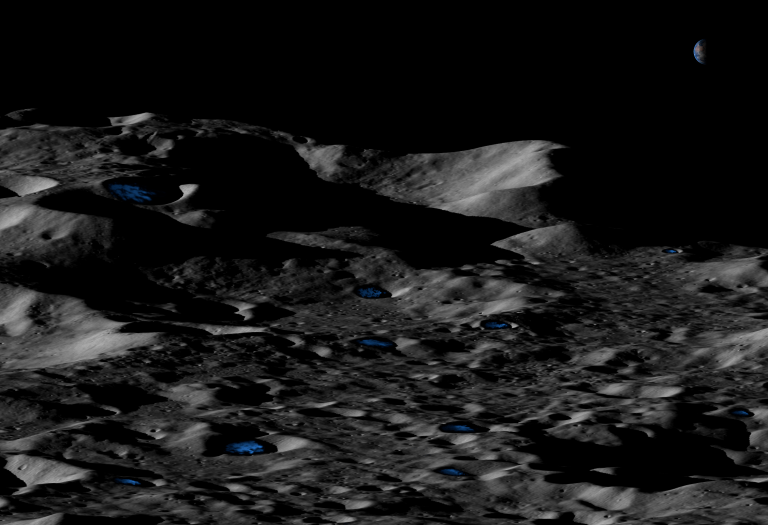Methods of movement for robotic explorers of other worlds have been as varied as the worlds themselves. Some missions have been simple landers, some rovers, and now there's even been a helicopter flight on Mars. But there is an unexplored hybrid mode of movement that will soon be coming to a Moon near you - hopping. NASA just granted an additional $41.6 million to support development of a hopping lunar lander that will explore the inside of craters that are permanently in shadow.
The mission, known as Micro-Nova, was granted as part of NASA's $370 million " Tipping Point " contract for technologies that are developing milestone-based new technologies. The $41.6 million was awarded to Intuitive Machines, a Texas-based company that specializes in developing autonomous systems for drones and other exploration technologies. To be clear - the "hopping" the Micro-Nova will do is actually a control flight using thrusters rather than the more biological form of hopping that insects do on Earth. The company won't be working alone on the project - they recruited scientists from Arizona State University 's School of Earth and Space Exploration.
Intuitive Machines video discussing the Micro-Nova HopperCredit - Intuitive Machines YouTube ChannelThose specialists will help to define what Micro-Nova will carry as part of its 1 kg payload. Most likely it will involve cameras to peer into areas that no person has ever seen before. The reason Micro-Nova uses its unique mobility technique is to peer into "permanently shaded regions" (PSRs) of the moon. Rovers would be unable to descend into the craters, and helicopters wouldn't work with the moon's lack of atmosphere. So a hopper is the best bet to reach these difficult environments.
They are not just difficult because they are hard to reach - they are also hard to observe and extraordinarily cold. Even once Micro-Nova is in the crater, it will still only be able to take full color spectra images of its immediate surroundings, but it should be able to take black-and-white images of a wider swath of the whole crater. Any information it is able to gather is better than the complete lack available right now at least.
Cold is a completely separate problem, with temperatures in these permanently dark areas dipping to 40°-80° Kelvin (-388° to -316° F). Most electronics will not function at those temperatures, and even the materials themselves would fail if they were not especially designed to withstand them.
That is a lot to expect from a hopper that measures only 76.2 centimeters on a side. But with the moon's miniscule gravity and the hopper's impressive leaping ability, it should be able to achieve its mission when it is dropped off by a Nova-C lander near the lunar south pole in December 2022.
Learn More:
ASU - NASA funds hopper to explore lunar polar craters
The Science Times - NASA Awards Over $41 Million Fund for Lunar Hopper to Hop Around Moon's Surface, Takes First Pictures Inside Craters
Intuitive Machines - Intuitive Machines and NASA Finalize Contract for Extreme Lunar Mobility Spacecraft
NASA - 2020 NASA Tipping Point Selections
Lead Image:
Artist's depiction of the Micro-Nova hopper and it's Nova-C landing craft deployed to the moon.
Credit - Intuitive Machines
 Universe Today
Universe Today

